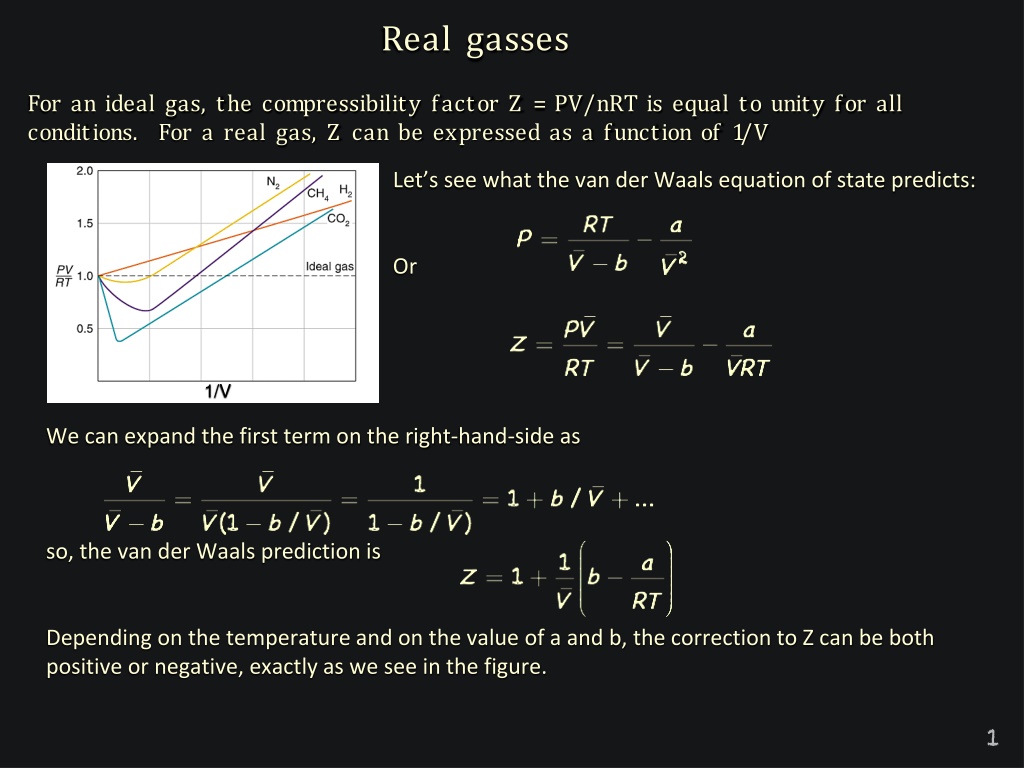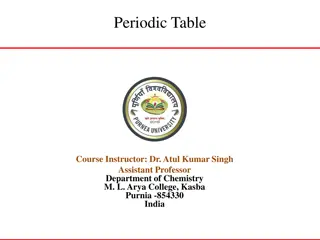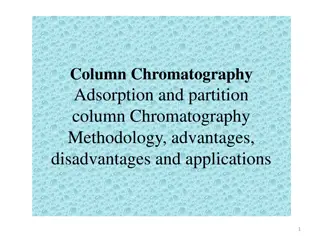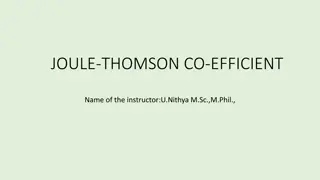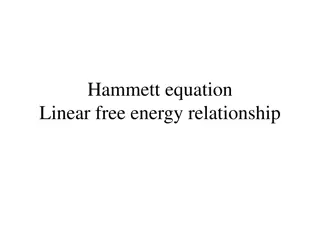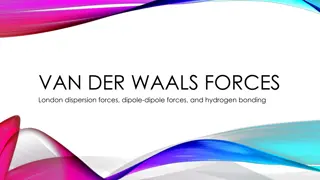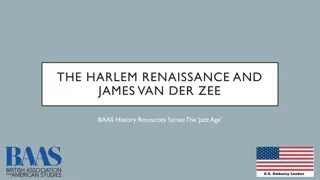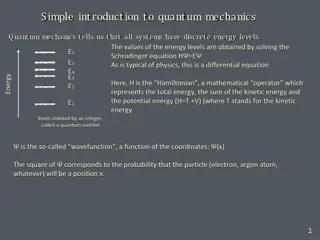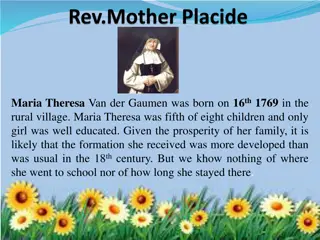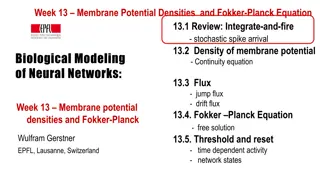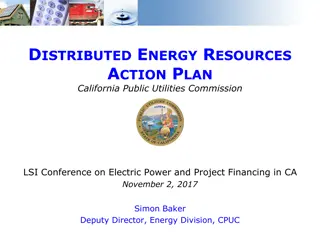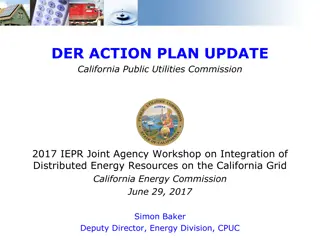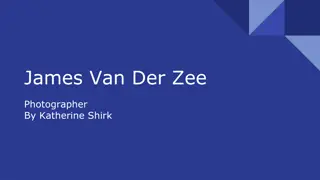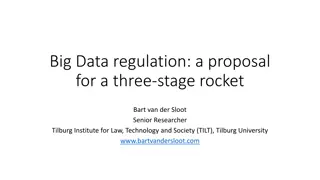Predictions from Van der Waals Equation of State
The compressibility factor Z in real gases can be related to 1/V through the van der Waals equation. The Virial expansion and predictions based on the interaction potential V(r) provide insights into the behavior of real gases at different temperatures. Explore the impact of hard-sphere and square-well predictions on the 2nd virial coefficient.
Download Presentation

Please find below an Image/Link to download the presentation.
The content on the website is provided AS IS for your information and personal use only. It may not be sold, licensed, or shared on other websites without obtaining consent from the author.If you encounter any issues during the download, it is possible that the publisher has removed the file from their server.
You are allowed to download the files provided on this website for personal or commercial use, subject to the condition that they are used lawfully. All files are the property of their respective owners.
The content on the website is provided AS IS for your information and personal use only. It may not be sold, licensed, or shared on other websites without obtaining consent from the author.
E N D
Presentation Transcript
Real gasses For an ideal gas, the compressibility factor Z = PV/nRT is equal to unity for all conditions. For a real gas, Z can be expressed as a function of 1/V Let s see what the van der Waals equation of state predicts: Or 1/V We can expand the first term on the right-hand-side as so, the van der Waals prediction is Depending on the temperature and on the value of a and b, the correction to Z can be both positive or negative, exactly as we see in the figure.
The last equation suggests that we can expand Z(T) as a power series in 1/V This power series is called the Virial expansion . The first coefficient B2(T) is called the 2nd virial coefficient . Comparing with the results on the previous page, you see that the prediction of the van der Waals eqn of state is B2(T)= b-a/RT, which looks like 1/V positive at high T and large and negative at low T It is possible to show that B2(T) is related to the interaction potential V(r) between any two molecules in the gas, namely
Remember from the previous page that The typical shape of V(r) is shown here. The distance r= is the so-called hard-sphere radius, the point at which the potential goes from negative (attractive) to positive (repulsive). 1/V Let s approximate V(r) as a hard-sphere (billiard ball) interaction V(r) = for r V(r) = 0 for r >
Hard-sphere prediction The definite integral which appears in the expression for the 2nd virial coefficient Can be treated as the integral between 0 and plus the integral from to . When V(r)=0, we have 1/V and, when V(r) = , Thus, We conclude that the repulsive part of the potential is responsible for the high-T constant limit of the 2nd virial coefficient
Square-well prediction Let s add a square well to V(r) so that it mimics a hard-sphere (billiard ball) repulsion with an attractive region at longer range V(r) = for r V(r) = for < r < V(r) = 0 for r > The potential is described by three parameters: , the hard sphere radius , the depth of the well , the range of the square well (note that is greater than 1. 1/V To calculate B2(T), we can use the integrals on the previous page with the addition of (for < r < ) so that (check the integration on your own!)
When 1 (the well shrinks to nothing) or T (the depth of the well is negligible compared to kT), we recover the hard-sphere expression for the 2nd virial coefficient. When T 0, the exp( /kT) term becomes very large, so that the second virial coefficient becomes large and negative. Fig. 2.18 of McQuarrie and Simons shows how we can adjust the parameters in a simple square-well potential to reproduce the experimental 2nd virial coefficient of molecular nitrogen. 1/V
